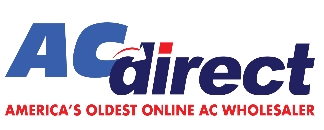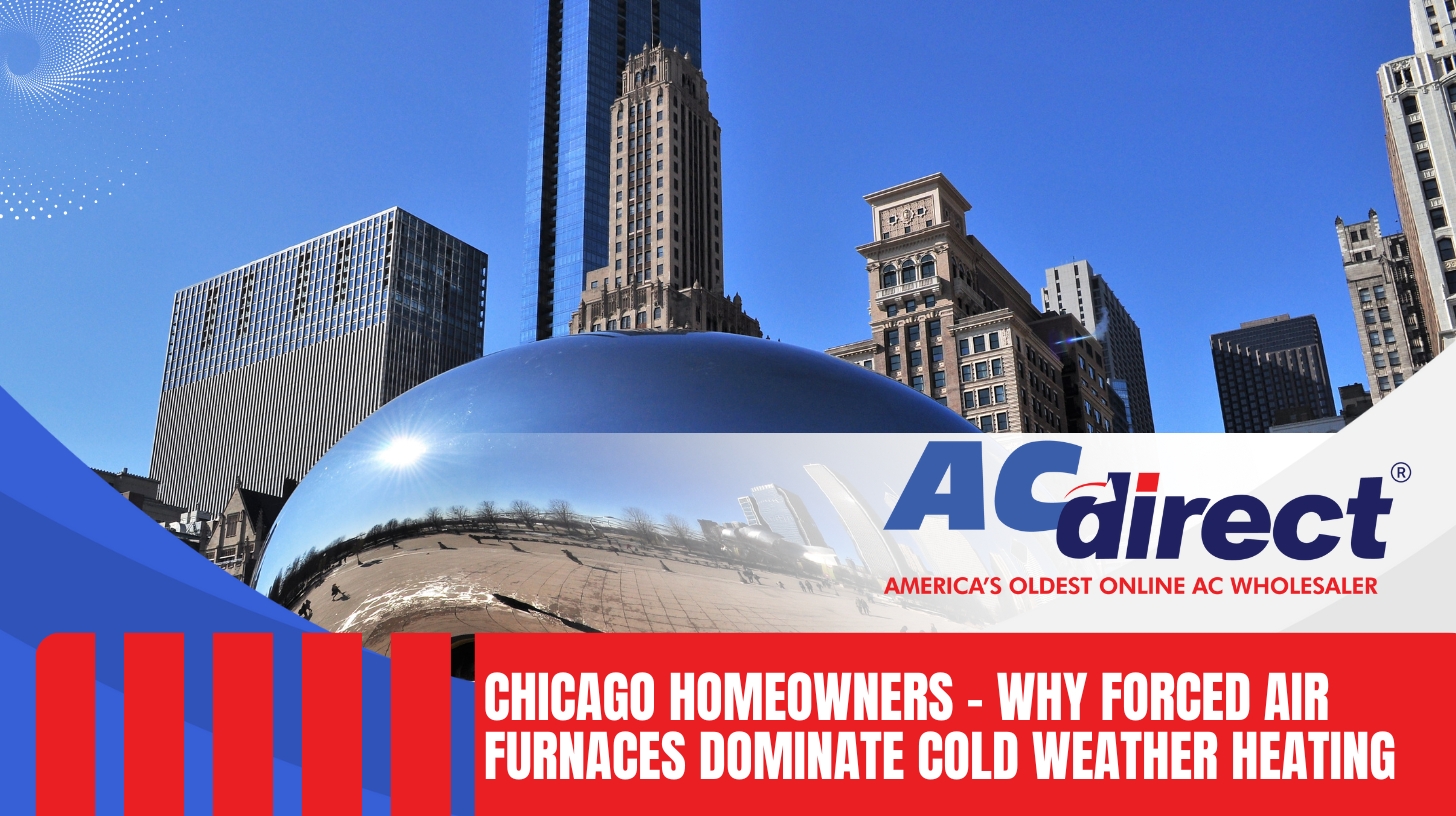The Crazy Stories that Show the Hazards of HVAC Maintenance
-
 By
Michael Haines
By
Michael Haines
- Apr 5, 2025

The Crazy Stories that Show the Hazards of HVAC Maintenance
Written by Michael Haines The life of an HVAC technician is full of stories that could send chills down the back of any homeowner. These skilled individuals brave the cramped and often neglected spaces of our houses to ensure our comfort systems run smoothly.
However, what they sometimes encounter could be straight from the pages of a thriller novel. For example, technicians have, more often than not, found themselves engaged in an unintended game of hide and seek with wildlife, as attics are infamous for becoming unintentional homes for urban wildlife.
A routine check can lead to a face-to-face meeting with a family of squirrels who have taken up residence among the ductwork. These creatures are not just a surprise but can also cause significant damage to the system, gnawing away at wires and insulation.
A Balancing Act Gone Wrong
One of the more dangerous aspects of an HVAC technician's job is navigating the dangerous walk of attic joists. The space between the beams is a no-man's land, where one misstep can lead to a sudden and embarrassing introduction to the room below. Add to that the claustrophobic feeling of the cramped attic, and you got yourself a nightmare for most people.
So, if you are afraid of heights and tight spaces, then being an HVAC technician might not be the career path for you. It's not just the fall that's concerning but also the aftermath of repairs and the potential compromise to the home's structural integrity.
The Shocking and Electric Surprises Inside
When it comes to electrical components, an HVAC system can be a Pandora's box for the untrained. Even for the experienced, a tangle of wires done by a previous, less knowledgeable hand can present a shocking surprise. On occasion, technicians encounter wiring that defies logic and regulation, leaving them to wonder how the system ever operated without incident in the first place.
We talked about the electric surprise, but what about the shocking surprise? An HVAC system's primary role is to circulate air, but when it becomes a conduit for mold and pests, the situation turns dangerous. Technicians have opened up systems to find colonies of mold flourishing in the damp recesses of air handlers and ducts. These scenarios not only require immediate remediation but also a reminder to homeowners about the importance of regular maintenance.
These are not the only kind of surprises that an HVAC technician might come across. Insects and HVAC systems can be a terrifying combination. There are countless tales of technicians opening up an external compressor to find it teeming with wasps, their nests aggressively guarding the capacitors and coils. A routine maintenance call can quickly escalate into a frantic battle with nature, requiring steady nerves and a swift response.
It seems that HVAC work is not for the faint of heart. Each call can be an adventure, a mystery to solve, and occasionally, a horror story to recount. Techs must be prepared for the potential dangers that lurk within the systems they maintain, armed with expertise to handle the unexpected challenges they may face. This is where the North American Technician Excellence (NATE) shines, as it provides these technicians with everything they need to be prepared for any situation.
The Heat and the Dangerous Chemicals
Working with heating systems can be a high-stakes job, especially when dealing with older gas furnaces. A routine check-up can escalate when years of built-up dust and debris ignite, causing a minor explosion.
Technicians often handle refrigerants, which can cause frostbite on contact with skin or blindness if it reaches the eyes. There was a case where an HVAC professional was repairing a leak and came into direct contact with a refrigerant. The chemical caused severe burns on his hands. This hazard highlights the necessity for proper personal protective equipment (PPE), such as gloves and goggles, when handling these substances.
Smart Add-Ons That Protect Your System from Wildlife Intruders
You’ve probably heard the stories—maybe you’ve even lived through one. An HVAC tech heads up to do a simple duct check and walks into a family reunion of squirrels. Or worse, pops open a condenser box only to be greeted by a wasp nest the size of a volleyball. These aren’t rare events—they’re common enough in places like Atlanta, where warm weather and older homes create the perfect storm for pest intrusions.
What makes this situation even more frustrating is how avoidable it often is. A few smart add-ons can make all the difference between a clean, quiet HVAC system and one that doubles as a squirrel motel or hornet hangout.
Let me tell you about a call I took in the Virginia-Highland neighborhood. It was early spring, and the homeowner said her AC wasn’t kicking on. Her outdoor unit was only two years old, so I knew something odd was going on. When I removed the top grate, I found the problem: a raccoon—yes, a full-grown raccoon—had chewed through the insulation on the wires and managed to short out the contactor. It must have squeezed in during the colder months, trying to stay warm.
The repair was one thing, but the bigger issue was how easy it would’ve been to prevent. That unit didn’t have a protective cage or even a mesh barrier around the base—just wide open access. And like most folks, she had no idea that kind of thing could even happen.
Simple Add-Ons, Serious Protection
Let’s start with one of the most underrated upgrades: louvered vent covers. These make it nearly impossible for animals like birds, squirrels, and even bats to get into exhaust vents or intake openings. If you’ve ever had to pull a bird nest out of a flue pipe, you know how big of a headache that can become. Adding a screened or louvered cap is a low-cost way to keep wildlife out—without restricting airflow.
Then there’s the issue of exposed line sets. We’ve seen wasps, ants, and spiders make their homes inside the foam insulation around refrigerant lines. That’s where wasp-resistant line set covers come in. These offer a hard-shell barrier around the lines and include tight-sealing end caps, which keep bugs out and insulation intact. No more swarms popping out when a tech tries to diagnose a pressure issue.
One of the most essential upgrades—especially for older neighborhoods like Grant Park or Inman Park—is the metal-mesh outdoor unit cover or condenser cage. These cages not only deter wildlife but also help prevent theft (because unfortunately, copper theft is still a real thing in some areas). Many homeowners don’t think about raccoons or possums chewing wires, but it’s surprisingly common—and expensive to fix.
We also carry rodent-proofing kits designed specifically for HVAC access points. These include metal mesh sheets, vent seals, and pest-resistant gaskets for duct boots and wall penetrations. They’re especially useful in attics and crawlspaces, where a mouse or squirrel only needs a hole the size of a quarter to get in.
Why This Matters for Technicians
As techs, we often go into these situations blind. We’re called out for a cooling problem, and suddenly we’re dodging wasps or disinfecting equipment that’s been used as a nesting box. Having these protections in place not only keeps systems safer—it makes our jobs safer.
In that raccoon case I mentioned? The homeowner ended up spending over $900 to replace fried components, remove the animal, and sanitize the unit. A $130 cage could’ve saved her every bit of that cost—and a whole lot of stress.
We recommend adding these upgrades during installs or offering them as part of a system tune-up. They’re easy upsells, and homeowners appreciate the added protection once they hear what can happen. It’s not about fear-mongering—it’s about being realistic. Wildlife doesn’t care if you just had a brand-new unit installed. If there’s a way in, they’ll find it.
Final Tip: Walk the Perimeter
Whether you’re a homeowner or a tech, take five minutes to walk around the home and check for obvious vulnerabilities:
-
Uncapped vents?
-
Openings around line sets?
-
Exposed ductwork in crawlspaces?
-
No cage on the outdoor unit?
These are the weak points. Addressing them with the right accessories keeps the system running smoother, the home safer, and the next maintenance call a lot less wild.
For homeowners dealing with repeat system damage—or just looking to replace aging units with something more efficient and protected—it may be worth considering an upgrade to a self-contained HVAC system. These packaged units combine the condenser, blower, and heating components into one outdoor enclosure, which makes them easier to install and maintain, especially in homes with limited indoor space. If your home uses both gas and electric, a dual fuel system is a solid all-season solution—these smart systems automatically switch between gas heat and electric heat pump operation depending on outdoor temperatures, helping you maximize efficiency. And if you live in a warmer area of Atlanta where you don’t need gas at all, AC Direct also offers efficient air conditioning and electric heat systems that deliver cooling comfort in the summer and reliable warmth during the mild winter months. These all-in-one solutions are ideal for homeowners who want fewer exposed components and a more consolidated footprint.
How Can HVAC Technicians Keep Themselves Safe?
Of course, proper training is the key ingredient to keeping technicians safe. But, in addition to training and expertise, some precautions and actions can keep them safe.
Use Proper Lifting Techniques
Back injuries are common among technicians due to lifting heavy equipment. To avoid injury, technicians should use safe lifting techniques by keeping the back straight, bending at the knees, and lifting with the legs, not the back.
Monitor Work Environments
Technicians should carry detectors for carbon monoxide and other harmful gasses when working near combustion appliances. They should also be aware of the signs of poor air quality, such as dizziness, headaches, or nausea.
Quality Tools and Equipment
Using the right tools for the job not only improves efficiency but also enhances safety. Technicians should always ensure that their tools are in good condition and that ladders or scaffolds are stable and secure before use.
Conduct a Risk Assessment
Before starting work, a technician should assess the area for potential hazards. This includes identifying trip hazards, ensuring there is sufficient ventilation, and checking for wildlife or other pests that might have taken up residence in the work area.
Adhere to Lockout/Tagout (LOTO) Procedures
To prevent electrical accidents, it is essential to follow lockout/tagout procedures before beginning any repair or maintenance. This involves shutting off power at the source and using a personal lock and tag to ensure the system cannot be re-energized by someone else while work is being performed.

 and now, NASCAR Racing Sponsor
and now, NASCAR Racing Sponsor










